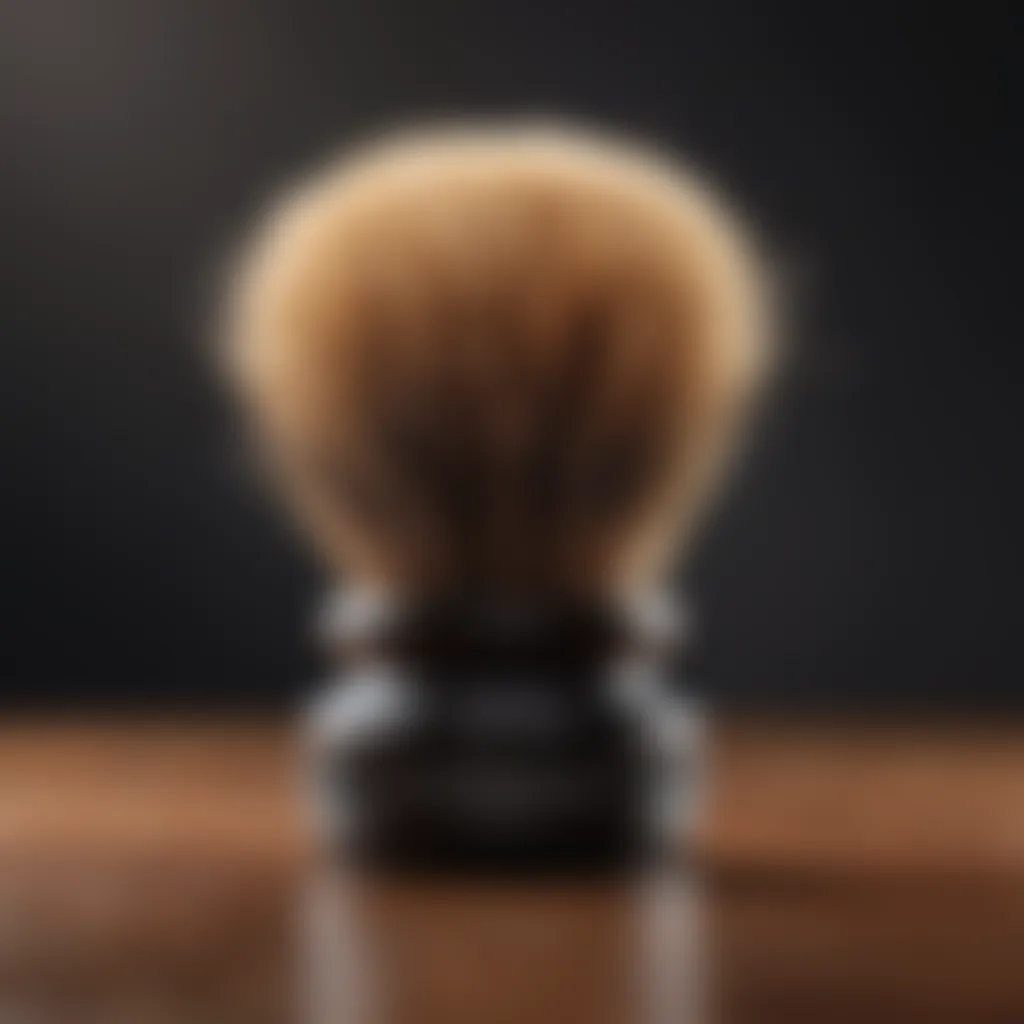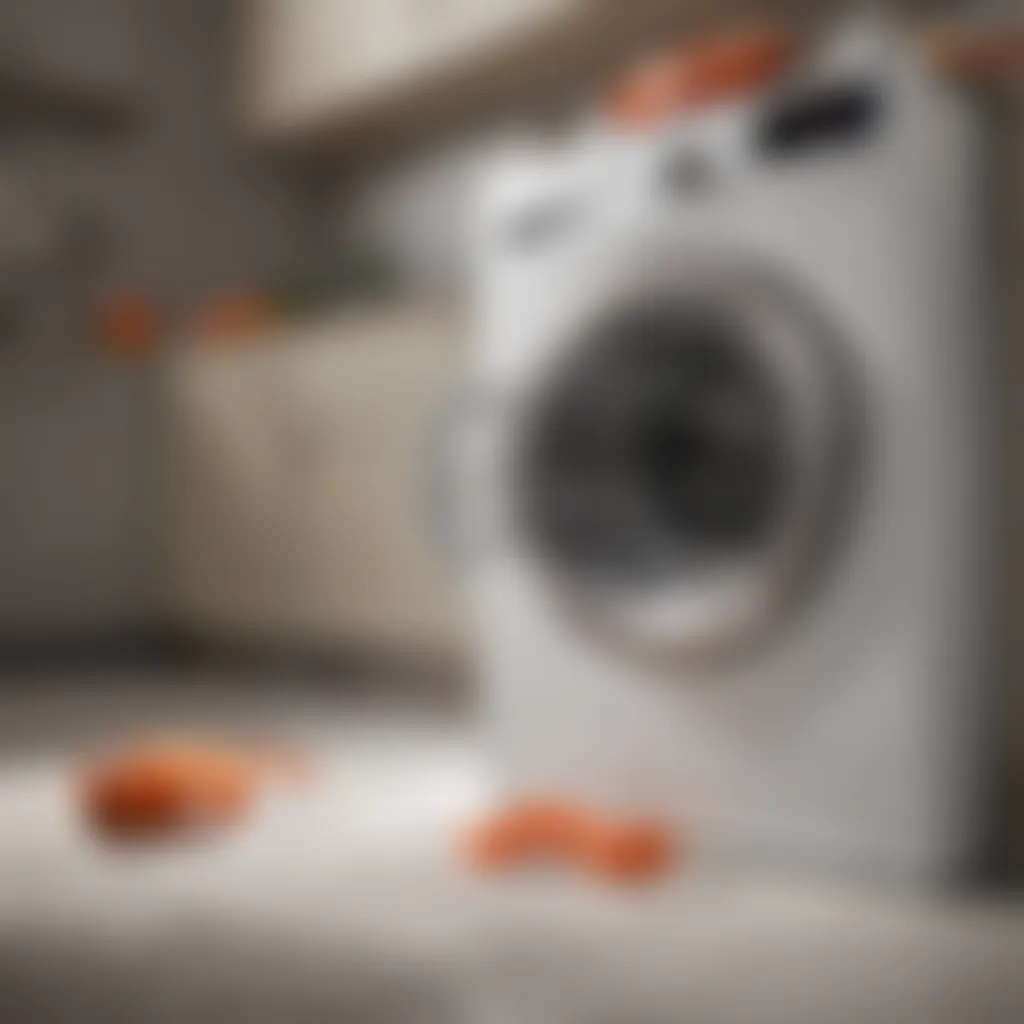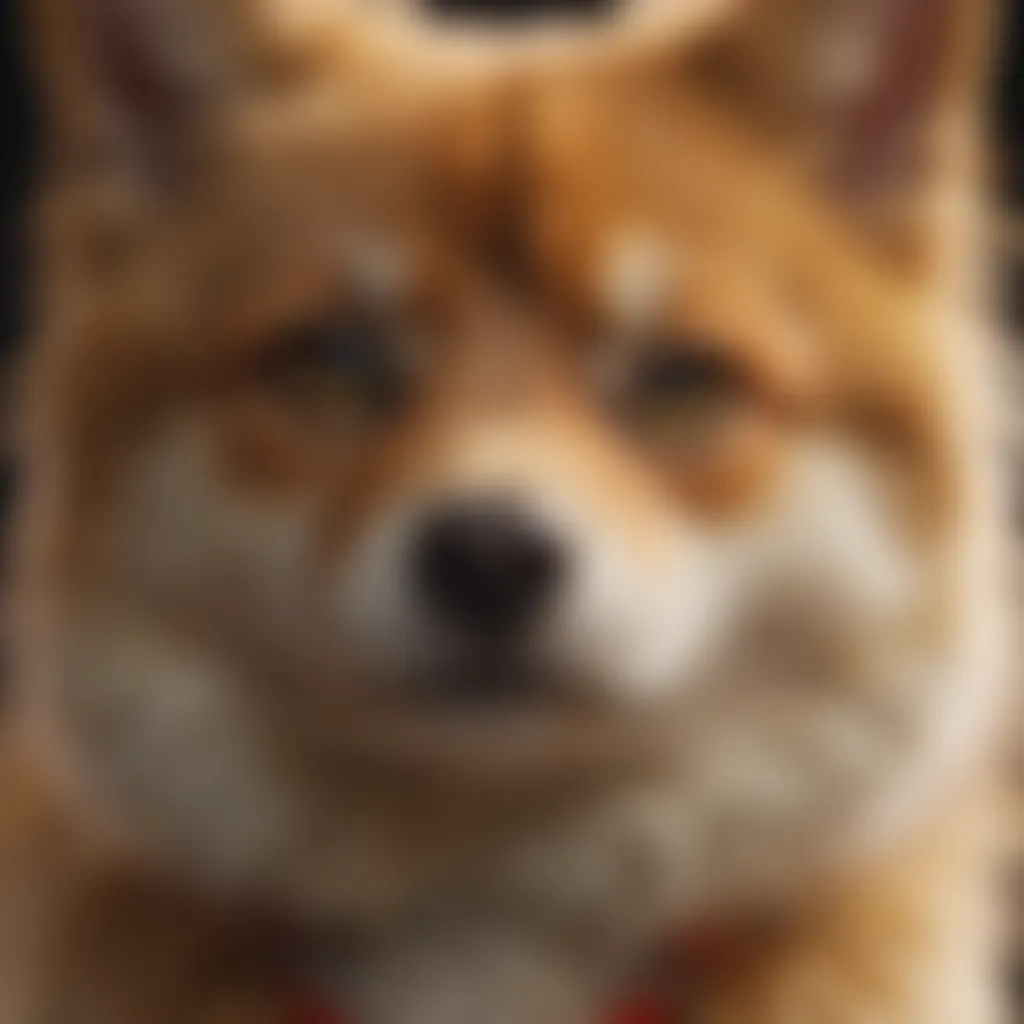Effective Strategies for Removing Pet Fur from Clothes


Intro
Pet ownership brings joy, companionship, and, inevitably, pet fur on clothing. Any pet owner knows the struggle of dealing with this issue. Simple cleaning might not be enough. Understanding effective methods to remove pet fur can enhance both your wardrobe maintenance and your comfort. This guide will explore several techniques tailored to different fabrics, as well as preventive measures to minimize fur accumulation.
Ingredients:
To effectively remove pet fur from clothing, you need no special ingredients. However, a few materials may assist you in this process. Here’s a list of essential tools that can aid in fur removal:
- Lint rollers: Preferably with extra sticky sheets.
- Rubber gloves: Good for creating static electricity.
- Fabric brush: Specifically designed for pet hair.
- Vacuum cleaner: One with upholstery attachment works best.
- Sticky tape: A handy alternative to lint rollers.
Preparation Steps:
Here are detailed instructions on preparing for and conducting the removal process:
- Choose the right tool: Depending on the amount of fur, select from the tools listed.
- Check the fabric type: Identify the fabric of your clothing. Some methods work better on specific materials.
- Prepare the area: Ensure you are in a space where the removed fur won't resettle on other clothing or surfaces.
Technical Aspects:
Before starting, keep these technical aspects in mind:
- Lint rollers: Use these for light fur accumulation. Roll them gently over the fabric, applying moderate pressure.
- Rubber gloves: Dampen the gloves slightly. Run your hands over the fabric. Fur will stick to the gloves due to static.
- Vacuum cleaner: If permitted, set it to a low suction setting to avoid damaging delicate fabrics.
Cleaning Process:
Follow these sequential steps for effective fur removal:
- Start with dry methods: Begin with a lint roller or handheld vacuum to grab large amounts of fur.
- Use a fabric brush: Gently brush the surface of the fabric; this method works well for textures that trap fur.
- Rubber gloves technique: If fur remains, use the damp rubber gloves to attract the remaining hair.
- Final check: Inspect the clothing under light to ensure all fur has been removed. Repeat steps if needed.
Troubleshooting Tips:
Here are some common D.I.Y methods with solutions for mistakes:
- If lint rollers are too sticky: This can damage delicate fabrics, so be cautious.
- For stubborn fur: A second or third attempt may be necessary. Don’t hesitate to repeat steps, switching tools if needed.
- If using gloves does not work: Ensure they are properly damp, but not wet.
"Regular maintenance is key; try to clean your clothes after each use to keep fur at bay."
Preventive Measures:
Take these preventive measures to reduce fur on your clothing in the first place:
- Regularly brush your pets to minimize shedding.
- Set boundaries for pets on furniture to limit fur transfer.
- Store clothing in a covered space when not in use.
Understanding the methods above helps maintain both cleanliness and appearance. Dealing with fur does not have to be an overwhelming issue. With the right tools and techniques, anyone can achieve effective results.
Understanding the Dynamics of Pet Fur
The relationship between pet fur and clothing is often a significant concern for pet owners. Understanding this relationship is fundamental for developing effective strategies to manage fur accumulation on garments. This section will elucidate the nature of pet fur and the reasons it tends to adhere to various fabrics, offering insights that will aid in the selection of appropriate cleaning techniques.
The Nature of Pet Fur
Pet fur is primarily composed of keratin, a protein that also comprises human hair and nails. The structure of fur can vary immensely depending on the type of pet. For instance, dogs have fur that ranges from short to long, curly to straight, which can all influence how easily it comes off in clumps or sticks to materials. Cats, on the other hand, tend to shed their finer hair regularly, and this can create persistent fuzz on clothing.


Moreover, the life cycle of pet fur, which includes growth, rest, and shedding phases, plays a major role in how much fur one might find on their clothing at any given time. Seasonal changes can also amplify shedding, leading to an increase in fur cling. Understanding these dynamics allows pet owners to predict shedding patterns, thus strategically planning clothing maintenance over the year.
Additionally, certain breeds shed more than others. Breeds like the Golden Retriever or Siberian Husky are known for their heavy shedding, while some smaller dog breeds might not shed as profusely. The knowledge of one's pet breed can help in tailoring fur management strategies.
Why Fur Sticks to Clothes
Fur clings to fabric due to a combination of static electricity and the texture of the clothing. When pets move about, especially in dry conditions, static charge can build, causing the fur to become electrically charged and, consequently, attracted to clothing fibers. This interaction is particularly common with synthetic fabrics like polyester or nylon, which are more prone to static electricity.
Furthermore, the texture of clothing also plays an important role. Rough or woven fabrics tend to capture fur more efficiently than smooth fabrics. Cotton, for example, is less likely to attract fur compared to fleece or wool. Hence, knowing the type of clothing material is essential for effective prevention and removal.
In summary, by comprehending these dynamics, pet owners can not only anticipate the occurrence of pet fur on clothes but can also tailor their cleaning methods accordingly. This foundational knowledge provides the groundwork for better strategies in the upcoming sections of this article, leading to a more effective approach to maintaining fur-free clothing.
Essential Tools for Fur Removal
Removing pet fur from clothing requires the right tools. Using effective tools can significantly reduce the time and effort needed to achieve clean garments. Specific items are better suited to different types of fabrics and situations. Therefore, it is important to select the right tool according to your needs. This section reviews four essential tools that are effective in managing and removing pet fur, offering clear benefits and considerations for their use.
Lint Rollers
Lint rollers are perhaps the most well-known tool for removing pet fur. They consist of a handle with an adhesive sheet that easily picks up hair from fabrics. The benefits of lint rollers are numerous:
- Convenience: They are portable and easy to use, making them suitable for a quick clean-up.
- Effectiveness: Lint rollers can capture not just fur, but also dust and lint.
- No Residue: After use, they leave no sticky residue on fabric.
When utilizing a lint roller, ensure that the adhesive sheets are not worn out. This maximizes their efficiency. It is also advisable to replace the sheets frequently to maintain effective cleaning.
Sticky Tape
Sticky tape is another simple yet effective solution for pet fur removal. While similar to lint rollers in concept, tape can often be more accessible at home. Here are some advantages:
- Inexpensive: Most households have some form of tape available, making it a cost-effective option.
- Rapid Application: Just tear off a strip and press it onto the fabric to gather hair.
A disadvantage of using sticky tape is that it might leave a slight residue. Moreover, it may not be as effective on larger fur clumps compared to lint rollers. Nonetheless, for quick touch-ups, sticky tape can be surprisingly effective.
Fur Brushes
Fur brushes are specialized tools designed for pet hair removal. These brushes have bristles that are specifically made to lift stubborn fur from clothing and other surfaces. Their main advantages include:
- Deep Cleaning: Brushes can effectively dislodge fur that sticks firmly to fabric.
- Multipurpose Usage: Many fur brushes can be used on both clothing and pet surfaces, such as upholstery.
When using a fur brush, it is best to brush in one direction. This helps in lifting fur rather than pushing it deeper into the fabric. It is also important to clean the brush frequently to maintain its effectiveness.
Rubber Gloves
Rubber gloves are often overlooked as a cleaning tool, but they can be remarkably effective. By simply putting on a pair of rubber gloves and wetting them slightly, you can gather pet fur from clothes. Some benefits include:
- Versatile: They can also be used for cleaning other surfaces, making them a multi-functional tool.
- Reusability: Unlike tape or lint rollers, rubber gloves are reusable, making them environmentally friendly.
To use gloves, rub your hands over clothing surfaces. The friction created will attract the fur to the gloves. Afterward, simply rinse the gloves under water to remove the collected fur.
All these tools have their unique strengths. Therefore, it's wise to keep a combination of them on hand for the best results in maintaining fur-free clothing.
Techniques for Removing Fur from Clothes


In the journey to keep clothes free from pet fur, understanding various removal techniques becomes crucial. Each method offers different benefits and caters to unique situations. Selecting the right technique can lighten the burden of maintaining a fur-free wardrobe. Effectively employing these methods can save time and energy, providing immediate satisfaction and comfort.
Dryer Method
Using the dryer is a practical solution for removing pet fur from clothing. The process is fairly straightforward. By placing fur-laden garments in the dryer with a dryer sheet for about ten minutes, static electricity pulls the fur away from the fabric. The low heat setting ensures that the clothes remain undamaged while loosening the stubborn fur. The dryer not only makes fur removal easier but also does so quickly.
Washing Machine Techniques
Using Fabric Softener
Fabric softener plays an important role in fur removal during the washing process. It works by coating the fabric with a thin layer that reduces static cling. The benefit of using fabric softener is its ability to release fur from the fibers during the agitation cycle. This makes it easier for the fur to wash away. Fabric softeners are popular because they also add fragrance and softness to clothing. However, it is essential to use these products judiciously, especially if sensitivities to fragrances or chemicals exist.
Adding Dryer Sheets
Similarly, dryer sheets can be a game-changer in the washing machine. When added during the rinse cycle, the sheets help to reduce static, which can significantly decrease the amount of fur sticking to fabrics. The effectiveness of dryer sheets lies in their ability to break the bond between fibers and fur. While dryer sheets are beneficial, overuse can lead to residue buildup on clothes. This factor should be considered before making it a routine.
Manual Removal Techniques
Manual techniques for fur removal provide a hands-on approach to ensuring clothes are fur-free. Different tools can be employed, and they often demonstrate effectiveness without requiring electrical appliances.
Brushing with a Lint Brush
Using a lint brush is one of the simplest and most effective techniques for manually removing pet fur. The unique characteristic of a lint brush is its sticky surface, which catches fur as you brush across clothing. This method works well for everyday clothes and is easy to store. Convenience and efficiency make it a popular choice for many. One downside is that this technique may not be fast enough for larger amounts of fur.
Using a Vacuum Cleaner
Vacuuming clothes is another effective method, particularly for larger amounts of accumulated fur. Using a vacuum with a brush attachment allows for deep cleaning. The suction mechanism is great for lifting fur from various fabric types. This method is advantageous as it can be done quickly. A drawback is that not all vacuum cleaners offer an appropriate attachment. Checking the vacuum's compatibility with fabric cleaning is essential before use.
Fabric-Specific Recommendations
Understanding how different fabrics interact with pet fur is crucial for effective maintenance. Each material has unique properties that influence how hair adheres to it. By recognizing these differences, you can implement suitable techniques that enhance fur removal efforts, mitigate future cling, and prolong the lifespan of your garments.
Choosing the right approach for specific fabrics not only helps with removing pet fur but also protects the integrity of the fabric itself. This consideration promotes a more efficient cleaning process, allowing for seamless and effective management of pet-related debris.
Synthetic Fabrics
Synthetic fabrics, including polyester and nylon, tend to attract pet fur more than natural fibers. The smooth surface of these materials may seem appealing, but it can lead to quicker adherence of hair.
To effectively remove fur from these fabrics, consider using a lint roller or sticky tape. Both methods are efficient in picking up static-bound hair. If you choose to wash a synthetic garment, using a washing machine with a gentle cycle is ideal. Additionally, incorporating fabric softener can significantly reduce static, making clothes less prone to trapping fur. Regularly brushing garments with a rubber glove afterward can yield good results as well.
Natural Fabrics
Natural fabrics like cotton, wool, and linen have different behaviors when it comes to pet fur. Cotton, for example, tends to attract fur but is also absorbent enough that washing can often be sufficient for cleaning. On the other hand, wool can hold onto fur tightly due to its texture.
For natural fabrics, you might prefer more aggressive methods. For cotton, regular washing is usually enough, and adding dryer sheets can help loosen the fur during the drying cycle. However, for wool or any textured fabric, manual removal using a fur brush is the most effective approach. It’s crucial to avoid high heat when cleaning these fabrics, as it can cause shrinkage or damage.
Delicate Fabrics
Delicate fabrics, such as silk or lace, require the utmost care. They are more prone to damage from rough treatment, hence conventional methods could result in significant harm. It's important to know that while these fabrics can attract fur, the methods of removal must be gentle.
For these sensitive materials, a soft lint brush designed specifically for delicates can be used. If washing is required, opt for a specialized detergent and a hand-wash cycle in cold water. Drying should be air-only, avoiding any heat exposure. If there’s a lot of fur, it may help to roll a piece of tape or use a dedicated lint roller in a delicate manner without applying too much pressure.


Note: Always check the care label for specific instructions before proceeding with any cleaning method.
In summary, recognizing fabric types allows for more effective and non-damaging fur removal techniques. Tailoring your approach based on the material can save you time and ensure the longevity of your clothing.
Preventive Strategies
Preventive strategies serve as an essential framework for pet owners who wish to minimize the accumulation of pet fur on clothing. Addressing the root cause is often more effective than solely relying on removal techniques after the fur has settled. With proactive measures, pet owners can significantly reduce their grooming burdens and maintain the cleanliness and longevity of their apparel. Understanding how to prevent pet fur cling not only saves time and effort but also enhances the overall experience of sharing a home with furry companions.
Regular Grooming of Pets
Grooming pets routinely plays a crucial role in managing shedding. By brushing your pet's fur regularly, you can significantly reduce the amount of hair that gets dispersed around the home and onto your clothes. The frequency of grooming typically depends on the breed and type of fur the pet has. For example, long-haired breeds like Persian cats or Golden Retrievers will usually require more frequent grooming compared to short-haired breeds.
Additionally, the time spent grooming can be rewarding. It helps to build a bond between you and your pet. It may also reveal any skin issues or parasites that could require attention. The right tools, such as de-shedding brushes or combs designed for your pet's fur type, can make a noticeable difference in the volume of loose hair transferred to your clothes.
Choosing Appropriate Clothing Materials
The type of fabric one chooses for clothing can also impact how much pet fur clings to the surface. Certain materials attract and hold onto fur more than others. For instance, fabrics like wool, frieze, and velvet are infamous for their ability to trap pet hair. In contrast, smoother and less textured fabrics like denim, nylon, or polyester blends do not typically hold onto fur as much, making them more suitable choices for pet owners.
When selecting clothing, consider opting for garments that can withstand the occasional pet hair battle. Look for clothing labeled as "fur-resistant" or select items that can be washed frequently without losing their texture or form. In combination with regular grooming practices, this will help in limiting the transfer of pet fur onto your clothing.
Establishing Restricted Areas
Creating specific zones within the home can effectively manage the spread of fur. By establishing restricted areas, you can limit where your pet is allowed, thus reducing the likelihood of fur ending up on your clothing. Consider designating your bedroom or specific seating areas as pet-free zones. This requires training your pet to respect these boundaries, which might take time but ultimately pays off.
Using gates or closed doors to regulate access can help maintain these restricted areas. Additionally, providing your pet with designated spaces, like their own bed or play area, encourages them to spend time away from your clothes or furniture. By implementing these boundaries, you can control where the fur travels, making it easier to manage overall cleanliness in your living space.
Additional Considerations
When tackling pet fur removal from clothing, considering various underlying factors can enhance the effectiveness of chosen methods. These additional considerations go beyond the basic techniques and tools, providing a holistic view that supports better garment maintenance.
Both environmental and practical aspects come into play when evaluating strategies for fur management. Understanding the implications of cleaning products, alternative solutions, and frequently asked questions can significantly impact your experience as a pet owner. Thus, this section serves to bridge the gap between simple fur removal and comprehensive care for both your pets and household items.
The Role of Help Section in Fur Management
FAQs often address common queries that help demystify the fur removal process. They cultivate awareness of effective strategies that can simplify the task. For many pet owners, frequent concerns include the best practices for specific materials or effective solutions that don’t harm their pets or the environment.
Informed decisions emerge from understanding the delicate balance of maintaining clean clothes while being responsible. Knowledge shared in FAQs can guide you on:
- Recommended products for effective fur removal.
- Common pitfalls that may reduce the efficiency of cleaning methods.
- Troubleshooting tips for stubborn fur particles.
By regularly reviewing and engaging with these resources, you sustain a proactive approach to dealing with pet fur, making you more equipped to manage the challenges that arise.
Environmental Impact of Cleaning Products
Addressing pet fur removal involves considering the environmental footprint of the cleaning products used. Many conventional cleaning agents contain harsh chemicals that may adversely affect both your health and the ecosystem. Opting for eco-friendly options not only addresses the removal of fur but also promotes sustainability.
- Biodegradable solutions offer a safer alternative while effectively targeting pet hair.
- Natural ingredients can yield excellent results without harming the environment.
Prioritizing eco-conscious products enhances personal well-being while fostering a healthier planet.
Alternatives to Commercial Products
For individuals wary of commercial cleaning products, various DIY alternatives can serve as excellent means for removing pet fur from clothing. These options often harness household items which can provide effective fur management while reducing expenses and exposure to chemicals. Consider these alternatives:
- Baking soda: Dusting baking soda on clothes can loosen hair, making it easier to remove.
- Fabric softener: A homemade spray of water and fabric softener can help reduce static and allow fur to come off effortlessly.
- Vinegar: Adding vinegar in the washing machine can help soften fabrics, enabling effective fur removal.
Choosing these alternatives not only saves money but also minimizes the likelihood of allergic reactions or skin irritations that some commercial products may cause.
The overall goal is to ensure that the strategies employed are effective, safe, and considerate of both your garments and the environment.







